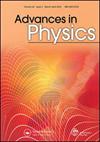脆性破碎的统计模型
IF 13.8
1区 物理与天体物理
Q1 PHYSICS, CONDENSED MATTER
引用次数: 112
摘要
综述了脆性材料破碎统计模型的最新进展。这些模型的一般目标是了解脆性材料破裂产生的碎片尺寸分布(fsd)的起源。脆性破碎可以分为两类:(1)瞬时破碎,其破碎世代无法区分;(2)连续破碎,其破碎世代可以确定。这种分类在采矿工业应用中变得很明显,其中瞬时破碎是指岩石的爆破,连续破碎是指对爆破后的岩石碎片进行破碎和磨碎。不稳定裂纹和裂纹分支合并模型包含了通常与瞬时破碎相关的两种FSD:幂指数(2−1/D)的尺度不变FSD和与泊松过程破碎相关的双指数FSD。通常与连续破碎相关的FSD有:源于不相关破碎的对数正态FSD和幂律FSD,后者可以建模为一连串破碎。简要列出了连续破碎一般速率方程的各种解。破碎实验的模拟表明,级联破碎和不相关破碎都是可能的,但与阿波罗式充填相关的最大充填密度机制可能与缓慢压缩破碎有关。第1页。2.引言瞬时碎片249 2.1。背景249 2.2。临界瞬时碎片250 2.3。破碎破碎的数值模型光束模型251 2.5。裂缝流变学252 . 2.6。快速裂缝的不稳定性侧分支形成碎片256 2.8。3D空间中的2D物体262过渡点262 2.10。模拟263 2.11。实验265连续破碎2683.2。不相关的分手史268级联碎片269碎片率方程269 3.5。颗粒填料破碎;摘要与讨论271致谢273附录273参考文献276本文章由计算机程序翻译,如有差异,请以英文原文为准。
Statistical models of brittle fragmentation
Recent developments in statistical models for fragmentation of brittle material are reviewed. The generic objective of these models is understanding the origin of the fragment size distributions (FSDs) that result from fracturing brittle material. Brittle fragmentation can be divided into two categories: (1) Instantaneous fragmentation for which breakup generations are not distinguishable and (2) continuous fragmentation for which generations of chronological fragment breakups can be identified. This categorization becomes obvious in mining industry applications where instantaneous fragmentation refers to blasting of rock and continuous fragmentation to the consequent crushing and grinding of the blasted rock fragments. A model of unstable cracks and crack-branch merging contains both of the FSDs usually related to instantaneous fragmentation: the scale invariant FSD with the power exponent (2−1/D) and the double exponential FSD which relates to Poisson process fragmentation. The FSDs commonly related to continuous fragmentation are: the lognormal FSD originating from uncorrelated breakup and the power-law FSD which can be modeled as a cascade of breakups. Various solutions to the generic rate equation of continuous fragmentation are briefly listed. Simulations of crushing experiments reveal that both cascade and uncorrelated fragmentations are possible, but that also a mechanism of maximizing packing density related to Apollonian packing may be relevant for slow compressive crushing. Contents PAGE 1. Introduction 248 2. Instantaneous fragmentation 249 2.1. Background 249 2.2. Criticality in instantaneous fragmentation 250 2.3. Numerical models of fragmentation 251 2.4. The beam model 251 2.5. Rheology of cracks 252 2.6. Instability of fast cracks 253 2.7. Side branches form fragments 256 2.8. 2D objects in 3D space 262 2.9. The transition point 262 2.10. Simulations 263 2.11. Experiments 265 3. Continuous fragmentation 268 3.1. Background 268 3.2. Uncorrelated breakup history 268 3.3. Cascade fragmentation 269 3.4. Rate equations for fragmentation 269 3.5. Fragmentation of granular packings 270 4. Summary and discussion 271 Acknowledgements 273 Appendix 273 References 276
求助全文
通过发布文献求助,成功后即可免费获取论文全文。
去求助
来源期刊

Advances in Physics
物理-物理:凝聚态物理
CiteScore
67.60
自引率
0.00%
发文量
1
期刊介绍:
Advances in Physics publishes authoritative critical reviews by experts on topics of interest and importance to condensed matter physicists. It is intended for motivated readers with a basic knowledge of the journal’s field and aims to draw out the salient points of a reviewed subject from the perspective of the author. The journal''s scope includes condensed matter physics and statistical mechanics: broadly defined to include the overlap with quantum information, cold atoms, soft matter physics and biophysics. Readership: Physicists, materials scientists and physical chemists in universities, industry and research institutes.
 求助内容:
求助内容: 应助结果提醒方式:
应助结果提醒方式:


